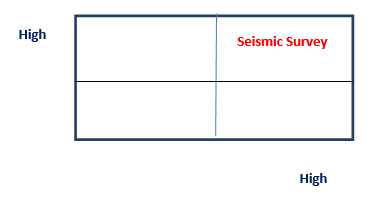Consider a real scenario where the relationship between a car’s velocity and time is given by ν(t) = t+2, for 0 ≤ t ≤ 5.
The following can be defined as follows:
Dependent variable: In a function, this is the quantity whose value depends on the value chosen for the independent variable (Spivak, 2006). In this case, the dependent variable is velocity, v in meters/second.
Independent variable: In a function, this is the variable that can be assigned an arbitrary value without consideration of the other variables (Spivak, 2006). In this case it is time, t in seconds.
Domain: [0,5].
Range: [2,7].

In the real-life problem given above, the Fundamental Theorem of Calculus will be used to establish the distance travelled by the car in 3s and its instantaneous acceleration at that point. The figures obtained can be used to compare the car’s performance in 3 seconds against data by other car manufacturers.
First Part
First part of the Fundamental Theorem of Calculus
According to Waner & Costenoble (2010), if f is continuous on an interval [a,b], then the function F defined on [a,b] by
F(x)=![]() , x Є [a,b],
, x Є [a,b],
is an antiderivative of f. i.e.
F’(x)=![]() , x Є [a,b].
, x Є [a,b].
The first part of the Fundamental Theorem of Calculus is used to obtain the relation between distance travelled and time. The established relation is then differentiated to obtain the acceleration function.
Second Part
Second part of the Fundamental Theorem of Calculus
According to Spivak, (2006), if f is continuous on an interval [a,b], and H is any antiderivative of f on [a,b], then
![]() , x Є [a,b] (3)
, x Є [a,b] (3)
The area under the curve of the velocity function gives the distance travelled by the car according to Waner & Costenoble (2010). This area is obtained using the second part of the Fundamental Theorem of Calculus by first obtaining the antiderivative of the integrand then substituting the limits of the region of interest i.e. t=0s and t=3s.
Solution
From elementary dynamics, velocity is related to distance travelled by, v(t)= ds/dt where s is the distance in meters as a function of time, t in seconds (Waner & Costenoble, 2010).
v(t)= ds/dt , hence; s(t)= ![]() (4)*
(4)*
From (2) and (4), s’ (t)= ds/dt (5) hence s’(t)= t+2 . (6)
Acceleration, a=d²s/dt²=1 (7) ** hence at t=3 seconds, we have;
Acceleration = 1m/s2
It is worth noting that a function can have several antiderivatives. For the above function, the antiderivatives are:
![]() =
= ![]() =
= ![]() . (8)
. (8)
![]() =
= ![]() =
= ![]() . (9)
. (9)
Either antiderivative can be used to compute the distance travelled by the car. However, it is worth noting that C1≠C2.
Given that the distance travelled at time t=0 is 2 meters, then C will be =2. (10)***
Hence ![]() =
= ![]() |30 =
|30 = ![]() =12.5m (11)
=12.5m (11)
Thus, distance travelled in 3 seconds will be 12.5 meters. ****
Answer Key
- * This follows from (1) and (2).
- ** Since a=d²s/dt² =d/dt*(t+2)
- *** substituting t=0 and s=2 in (8)
- **** A similar analysis with (9) will yield the same answer
Importance of the Fundamental Theorem of Calculus
This theorem provides a powerful tool that determines the area under a curve (Spivak, 2006). This area for the case of a velocity time function gives the distance travelled in that time. The theorem provides a more accurate tool compared to the summations employed by the trapezoidal rule. By simply finding the antiderivative and evaluating it at the two endpoints, we can obtain the area of interest (Spivak, 2006). The first part provides an easy way for determining the rate of change of a value. In this case, the acceleration which is the rate of change of the velocity was obtained using the theorem.
References
Spivak, M. (2006). Calculus. Cambridge: Cambridge University Press.
Waner, S. & Costenoble, S. (2010). Applied Calculus. Wadsworth: Cengage Learning.